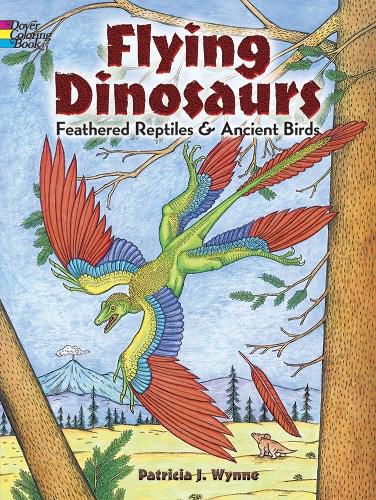Readings Newsletter
Become a Readings Member to make your shopping experience even easier.
Sign in or sign up for free!
You’re not far away from qualifying for FREE standard shipping within Australia
You’ve qualified for FREE standard shipping within Australia
The cart is loading…






Did dinosaurs have feathers? Some of them certainly did. Remains of these creatures and of birds and flying reptiles that lived millions of years ago inspired this ready-to-colour collection of 30 illustrations. From the turkey-sized Caudipteryx, with its long, flashy, feathered tail, to the Teratornis, a condor with a 12-foot wingspan, this carefully researched collection of feathered dinosaurs will amaze colourists and amateur paleontologists of all ages. Included are finely detailed images of Archaeopteryx, a blue-jay-sized creature that lived 150 million years ago; the Beipiaosaurus, a nine-foot-long lizard with stiff feathers and leaf-shaped teeth; as well as a Velociraptor, Oviraptor, Quetzalcoatlus, and many other ancient animals. Captions describe feathering patterns, incubation periods, and nesting habits.
$9.00 standard shipping within Australia
FREE standard shipping within Australia for orders over $100.00
Express & International shipping calculated at checkout
Did dinosaurs have feathers? Some of them certainly did. Remains of these creatures and of birds and flying reptiles that lived millions of years ago inspired this ready-to-colour collection of 30 illustrations. From the turkey-sized Caudipteryx, with its long, flashy, feathered tail, to the Teratornis, a condor with a 12-foot wingspan, this carefully researched collection of feathered dinosaurs will amaze colourists and amateur paleontologists of all ages. Included are finely detailed images of Archaeopteryx, a blue-jay-sized creature that lived 150 million years ago; the Beipiaosaurus, a nine-foot-long lizard with stiff feathers and leaf-shaped teeth; as well as a Velociraptor, Oviraptor, Quetzalcoatlus, and many other ancient animals. Captions describe feathering patterns, incubation periods, and nesting habits.